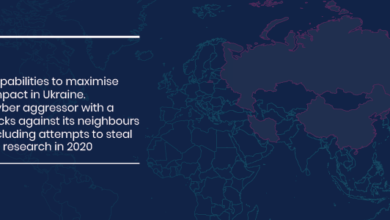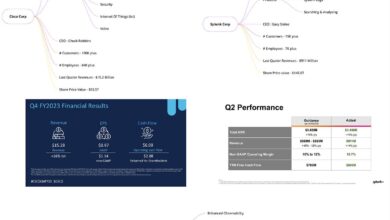
Suspected Ransomware Attack on University of Sunderland
Suspected ransomware attack on University of Sunderland – the headlines screamed it, and the implications are chilling. Imagine the disruption: student records potentially compromised, research projects halted, and the entire university network brought to its knees. This isn’t just a technical glitch; it’s a potential catastrophe affecting thousands of lives and years of work. Let’s dive into the details and explore the ramifications of this potential cyberattack.
The University of Sunderland, like many institutions, relies heavily on digital infrastructure. A successful ransomware attack could cripple everything from online learning platforms to administrative systems, impacting students, faculty, and staff alike. The potential for data breaches is immense, exposing sensitive personal information and research data. The fallout could include hefty fines, reputational damage, and a prolonged period of recovery.
Initial Impact Assessment
A ransomware attack on the University of Sunderland would have far-reaching and potentially devastating consequences, impacting every aspect of its operations. The immediate effects would be felt across academic, administrative, and research domains, leading to significant disruption and potentially long-term damage to the university’s reputation and standing. The scale of the impact would depend heavily on the extent of data encryption and the effectiveness of the university’s backup and recovery systems.The disruption to academic activities could be severe.
Student access to learning materials, including online courses, assessment platforms, and library resources, could be completely blocked. Lectures and tutorials might be cancelled, delaying the academic calendar and potentially impacting student progression and graduation timelines. Research projects, especially those relying on sensitive data or specialized software, could be severely hampered, leading to delays in publications, grant applications, and overall research output.
Administrative functions, such as student admissions, financial aid processing, and staff payroll, could also be significantly affected, leading to operational bottlenecks and administrative chaos.
Impact on University Departments
The following table details the potential impact on various university departments, considering the severity of disruption, estimated recovery time, and planned contingency measures. These estimates are based on similar incidents at other universities and assume a scenario where a significant portion of the university’s data is encrypted. The actual impact and recovery time will vary depending on the specific ransomware used, the university’s cybersecurity infrastructure, and the effectiveness of its incident response plan.
| Department | Impact Level | Recovery Time Estimate | Contingency Plans |
|---|---|---|---|
| IT Services | Critical – complete system outage | 2-4 weeks (optimistic), potentially longer | Redundant systems (if available), outsourcing of IT support, manual processes for essential functions. |
| Student Services | High – significant disruption to student support | 1-2 weeks | Offline support, temporary relocation of services, prioritization of essential services. |
| Research Labs | High to Critical – depending on data loss and research stage | Variable, potentially months for some projects | Backup data recovery (if available and unencrypted), alternative research methods, seeking external collaboration. |
| Finance Department | High – disruption to payroll and financial transactions | 1-2 weeks | Manual processing of payroll, alternative payment methods, seeking temporary financial support. |
| Academic Departments | Medium to High – disruption to teaching and research | Variable, depending on the department and the extent of data loss | Shift to offline teaching methods, reliance on personal backups, prioritization of essential coursework. |
Data Breach Analysis
A ransomware attack on a university like Sunderland presents a significant data breach risk, potentially exposing a wide range of sensitive information. Understanding the types of data at risk and the legal consequences is crucial for effective response and mitigation. This analysis focuses on identifying potential vulnerabilities and outlining necessary steps for damage control.The University of Sunderland, like most universities, holds a vast amount of sensitive data.
A successful ransomware attack could compromise student records, financial information, and crucial research data, leading to severe repercussions.
Types of Sensitive Data Potentially Compromised
A ransomware attack on the University of Sunderland could expose several categories of sensitive data. Student records, containing personal details like names, addresses, dates of birth, national identification numbers, and academic performance, are highly vulnerable. Financial information, including student loan details, staff payroll data, and university financial records, could also be targeted. Furthermore, the university likely possesses valuable research data, potentially including intellectual property, confidential research findings, and experimental results.
The compromise of any of these data sets would have significant consequences.
Legal and Reputational Ramifications of a Data Breach, Suspected ransomware attack on university of sunderland
The legal ramifications of a data breach are substantial, particularly under the General Data Protection Regulation (GDPR). GDPR mandates strict data protection measures and imposes significant fines for non-compliance. Failure to adequately protect sensitive data could result in hefty penalties for the University of Sunderland. Beyond financial penalties, a data breach severely damages the university’s reputation. Loss of public trust, damage to the university’s brand image, and potential loss of students and staff could have long-term consequences.
Similar incidents at other universities have shown the devastating impact on public perception and funding. For example, the University of California, Berkeley, faced significant reputational damage and legal challenges following a data breach in 2019, highlighting the potential severity of such events.
Steps to Mitigate the Impact of a Data Breach
The university needs a comprehensive strategy to mitigate the impact of a data breach. This should involve several key steps:
The following points Artikel a proactive approach to minimize the fallout from a data breach:
- Immediate Incident Response: Establish and regularly test a robust incident response plan to quickly contain the attack and minimize data exposure. This plan should include clear roles, responsibilities, and communication protocols.
- Data Recovery and Restoration: Implement a comprehensive data backup and recovery system to ensure rapid restoration of compromised data. Regular backups, stored offline and in a secure location, are essential.
- Notification of Affected Individuals: Comply with legal requirements regarding notification of individuals whose data has been compromised. This should be done promptly and transparently.
- Forensic Investigation: Conduct a thorough forensic investigation to determine the extent of the breach, identify the source, and learn from the incident to prevent future attacks. This involves engaging cybersecurity experts.
- Enhance Security Measures: Strengthen cybersecurity infrastructure and implement multi-factor authentication, intrusion detection systems, and regular security audits to prevent future breaches.
- Legal and Regulatory Compliance: Ensure full compliance with GDPR and other relevant data protection regulations. This includes appointing a Data Protection Officer (DPO) and maintaining detailed records of data processing activities.
- Public Relations Management: Develop a communication strategy to address the public and stakeholders transparently and effectively. This helps mitigate reputational damage.
Ransomware Tactics and Techniques
The University of Sunderland ransomware attack, like many others targeting educational institutions, likely involved a sophisticated combination of techniques to gain access, encrypt data, and ultimately extort a ransom. Understanding these tactics is crucial for implementing effective preventative measures. This section will delve into the potential methods used and common attack vectors.The attackers likely employed a multi-stage approach, combining various techniques to maximize their chances of success and minimize detection.
This is a common characteristic of modern ransomware operations, which often leverage automated tools and exploit readily available vulnerabilities.
Ransomware Infiltration Methods
The University of Sunderland’s systems could have been compromised through several avenues. Phishing campaigns, a prevalent tactic, are highly effective against universities due to the large number of staff and students who regularly interact with emails and online resources. Malicious emails disguised as legitimate communications, perhaps containing infected attachments or links leading to compromised websites, could have been the initial entry point.
Exploiting known vulnerabilities in software applications, operating systems, or network devices is another likely method. Attackers frequently scan for unpatched systems, leveraging publicly available exploit kits to gain unauthorized access. Finally, the attackers may have utilized social engineering tactics, manipulating individuals within the university to gain access credentials or sensitive information. For example, an attacker might pose as a technician requiring access to a specific system.
Common Ransomware Attack Vectors Targeting Educational Institutions
Educational institutions are particularly vulnerable to ransomware attacks due to their extensive interconnected networks, often containing sensitive student and research data. Several attack vectors are frequently exploited:
- Vulnerable Software and Systems: Outdated or unpatched software and operating systems create significant entry points for attackers. This is often exacerbated by the diverse range of software and hardware used within a university environment.
- Phishing and Social Engineering: As previously mentioned, phishing emails and social engineering techniques are highly effective in gaining initial access. These attacks often target individuals with access to sensitive systems or data.
- Third-Party Vendors and Suppliers: Attacks can originate from compromised third-party vendors who have access to the university’s network. This highlights the importance of robust vendor security vetting.
- Remote Desktop Protocol (RDP) Exploitation: RDP, often used for remote access to university systems, can be a target for brute-force attacks or exploitation of known vulnerabilities if not properly secured.
- Unsecured Wi-Fi Networks: Public or unsecured Wi-Fi networks on campus can be exploited to intercept traffic or infect devices connected to them.
Typical Stages of a Ransomware Attack
A flowchart would visually represent the typical stages of a ransomware attack. The attack begins with initial reconnaissance, followed by exploitation of a vulnerability or social engineering to gain access. Data exfiltration might occur before encryption to increase pressure for payment. Finally, the ransomware is deployed, encrypting critical data and displaying a ransom demand. The attackers may then attempt to further exfiltrate data and/or threaten to publicly release it.
The entire process, from initial compromise to ransom demand, can occur rapidly, making swift detection and response crucial.
Recovery and Remediation Strategies

A ransomware attack on a large institution like the University of Sunderland requires a multifaceted and swift recovery strategy. The scale of the attack necessitates a well-defined plan encompassing data restoration, system recovery, and robust communication. Effective remediation involves not only restoring functionality but also strengthening security to prevent future incidents.
The recovery process begins with a thorough assessment of the damage. This includes identifying affected systems, the extent of data encryption, and the specific type of ransomware used. This information is crucial for tailoring the recovery approach and determining the most efficient methods for data restoration and system recovery. Simultaneously, containment measures should be implemented to prevent further spread of the ransomware.
Data Backup and Recovery Best Practices
Robust data backup and recovery strategies are paramount for institutions like universities. A multi-layered approach is essential, incorporating both on-site and off-site backups. Regular, automated backups should be implemented, with backups stored in geographically separate locations to mitigate the risk of complete data loss in case of a physical disaster or widespread attack. Testing the recovery process regularly is also critical to ensure its effectiveness and identify any potential issues.
The University of Sunderland, for instance, could have benefited from a 3-2-1 backup strategy: three copies of data, on two different media, with one copy offsite. This would have provided multiple recovery points in case of a ransomware attack.
System Restoration Procedures
Restoring systems after a ransomware attack requires a methodical approach. This starts with isolating infected systems to prevent further spread. Then, systems should be thoroughly sanitized to remove any traces of the malware. This may involve reinstalling operating systems and applications, restoring data from clean backups, and implementing updated security patches. Prioritization is key; critical systems supporting essential services should be restored first.
The suspected ransomware attack on the University of Sunderland highlights the vulnerability of even large institutions. Thinking about robust data security, it makes me wonder about the future of app development; check out this article on domino app dev the low code and pro code future for potential solutions. Perhaps such advancements could help universities better protect sensitive information against future ransomware threats.
The whole situation at Sunderland is a serious wake-up call.
The process should be carefully documented, with regular checkpoints to track progress and identify any potential roadblocks. The University might consider using a phased approach, restoring departmental systems in order of operational criticality.
Incident Response Plan Development
A comprehensive incident response plan is essential for effective management of a ransomware attack. This plan should detail roles and responsibilities, communication protocols, and escalation procedures. It should include clear guidelines on how to handle media inquiries, communicate with affected individuals, and collaborate with law enforcement. Regular training exercises are crucial to ensure staff familiarity with the plan and their roles within it.
The University’s plan should Artikel specific steps for each phase of the response, from initial detection to post-incident analysis and remediation. For example, the plan should clearly specify who is responsible for notifying law enforcement and what information needs to be provided. Regular review and updating of the plan based on evolving threat landscapes and lessons learned are vital.
The plan should also address the communication strategy, detailing how to communicate with students, staff, and the wider community about the incident and its impact. Finally, it should include a detailed post-incident activity plan, focusing on recovery and improving security measures.
Cybersecurity Posture Review
The University of Sunderland’s recent ransomware attack highlights critical gaps in its cybersecurity defenses. This review compares the university’s existing infrastructure and protocols against industry best practices for higher education, pinpointing weaknesses and offering recommendations for improvement. A robust cybersecurity posture is not just about reacting to incidents; it’s about proactively mitigating risks and building resilient systems.The University of Sunderland, like many higher education institutions, likely relies on a combination of on-premise and cloud-based infrastructure.
However, the attack suggests inconsistencies in the implementation and management of these systems, potentially leading to vulnerabilities. A thorough review should consider the university’s network segmentation, endpoint security, data backup and recovery procedures, and employee security awareness training programs. Comparing these aspects to established frameworks like NIST Cybersecurity Framework or CIS Controls will reveal areas for improvement.
Existing Cybersecurity Infrastructure and Protocols Compared to Best Practices
Higher education institutions are attractive targets for ransomware attacks due to the large amount of sensitive data they hold and their often complex IT environments. Best practices generally include robust multi-factor authentication (MFA) across all systems, regular security awareness training for staff and students, comprehensive network segmentation to limit the impact of breaches, and a robust incident response plan. A comparison reveals potential weaknesses in the university’s approach to patching, vulnerability management, and data loss prevention.
For example, the university’s reliance on outdated software or a lack of automated patching could have created entry points for the attackers.
Potential Weaknesses Exploited by Ransomware Actors
Several vulnerabilities could have been exploited. Insufficient network segmentation allowed the ransomware to spread rapidly. A lack of robust endpoint detection and response (EDR) solutions hindered early detection and containment. Weak or absent multi-factor authentication (MFA) might have allowed attackers to easily gain initial access. Furthermore, inadequate employee security awareness training may have led to phishing attacks successfully compromising user credentials.
The absence of regular security audits and penetration testing further increased the risk. These weaknesses, when combined, created a perfect storm for a successful ransomware attack.
Recommendations for Strengthening Cybersecurity Posture
A multi-pronged approach is needed. Firstly, the university must implement strong multi-factor authentication (MFA) across all systems and accounts. Secondly, a comprehensive employee security awareness training program should be implemented, focusing on phishing and social engineering techniques. Thirdly, robust endpoint detection and response (EDR) solutions should be deployed to monitor and prevent malicious activity. Regular security audits and penetration testing should be conducted to identify and address vulnerabilities proactively.
Finally, a robust incident response plan should be in place, regularly tested and updated, to minimize the impact of future attacks. Implementing a zero trust security model, where access is granted based on least privilege and continuous verification, is a longer-term strategic goal. This would significantly reduce the impact of a successful compromise. Investing in robust data backup and recovery systems, stored offline and regularly tested, is also critical to ensure business continuity.
Insurance and Legal Considerations
A ransomware attack on a university like Sunderland carries significant financial and legal ramifications. Cyber insurance plays a crucial role in mitigating these risks, while understanding legal obligations is paramount to ensuring compliance and minimizing potential liabilities. This section will explore both aspects in detail.
Cyber Insurance’s Role in Mitigating Financial Impact
Cyber insurance policies can significantly reduce the financial burden associated with a ransomware attack. These policies typically cover expenses related to incident response, data recovery, legal fees, regulatory fines, and potentially even ransom payments (though this is becoming less common due to the risks involved). For a university, the costs associated with a successful ransomware attack can be astronomical, including lost productivity, reputational damage, and the cost of restoring systems and data.
A comprehensive cyber insurance policy can help offset these significant expenses, allowing the university to focus on recovery and remediation rather than immediate financial distress. For example, a policy might cover the cost of hiring a cybersecurity firm to assist with incident response, the expenses incurred in notifying affected individuals, and the costs of credit monitoring services offered to those whose data was compromised.
The specific coverage varies greatly depending on the policy, so careful selection is vital.
Legal Obligations Following a Ransomware Attack and Data Breach
The University of Sunderland, like all UK organizations, has several legal obligations following a ransomware attack, particularly if it results in a data breach. The UK’s General Data Protection Regulation (GDPR) requires organizations to report data breaches to the Information Commissioner’s Office (ICO) within 72 hours if the breach is likely to result in a high risk to the rights and freedoms of individuals.
Failure to comply with this notification requirement can result in significant fines. Furthermore, the university must demonstrate that it has taken appropriate technical and organizational measures to protect personal data (data minimization, purpose limitation, storage limitation, integrity and confidentiality). A ransomware attack that leads to a data breach raises questions about whether the university met these obligations.
Beyond GDPR, other legislation, such as the Computer Misuse Act 1990, might also be relevant depending on the specifics of the attack. The university may also face civil lawsuits from affected individuals or other parties. A thorough investigation into the cause of the breach, along with transparent communication with affected individuals and regulatory bodies, is crucial in mitigating legal risks.
Comparison of Cyber Insurance Policies for Universities
The following table compares different types of cyber insurance policies relevant to universities, highlighting key features and considerations. Note that specific coverage and pricing will vary based on the insurer and the university’s risk profile.
| Policy Type | Key Coverage | Advantages | Disadvantages |
|---|---|---|---|
| First-Party Coverage | Covers the university’s own losses, such as data recovery, system restoration, and business interruption. | Directly addresses the university’s financial losses. | May not cover third-party liabilities. |
| Third-Party Liability Coverage | Covers the university’s legal liability to others, such as individuals whose data was compromised. | Protects against lawsuits and regulatory fines. | Requires demonstrating negligence or failure to meet legal obligations. |
| Ransomware Coverage | Specifically covers costs associated with ransomware attacks, including ransom payments (often with limitations) and incident response. | Directly addresses the financial impact of a ransomware attack. | Coverage may be limited, and some insurers are becoming more cautious about this type of coverage. |
| Data Breach Response Coverage | Covers costs associated with responding to a data breach, including notification of affected individuals, credit monitoring, and legal counsel. | Helps manage the complexities of a data breach response. | May not cover all aspects of a data breach response. |
Public Relations and Communication

A suspected ransomware attack on a university like Sunderland requires a swift and carefully planned communication strategy. Transparency, honesty, and consistent updates are crucial for maintaining trust with students, staff, and the public. Failure to communicate effectively can exacerbate the situation, leading to panic, misinformation, and reputational damage. The goal is to provide accurate information while minimizing disruption and anxiety.The University of Sunderland’s communication strategy should involve multiple channels and target different audiences with tailored messages.
This approach ensures that everyone receives relevant and timely updates, fostering a sense of community and shared understanding during this challenging time. Regular communication will also help manage expectations and alleviate concerns about the impact of the attack.
Communication Channels and Target Audiences
The University should utilize a multi-pronged approach, leveraging various communication channels to reach all stakeholders effectively. This includes official university websites, email alerts, social media platforms (Twitter, Facebook, etc.), press releases, and potentially even SMS messaging for urgent updates. Specific audiences (students, staff, parents, alumni, and the general public) will require tailored messages addressing their unique concerns and information needs.
For example, students need updates on coursework, exams, and access to online resources; staff require information regarding their work and payroll; and the public needs general updates about the incident and its impact.
Effective Messaging Examples
Maintaining trust and transparency requires consistent, factual messaging that avoids technical jargon and ambiguity. Examples of effective messaging include:* Acknowledgement of the incident: “The University of Sunderland has detected a suspected ransomware attack on its IT systems.”
Description of the situation (without revealing sensitive details)
“We are currently working to contain the attack and restore our systems. Our priority is the safety and security of our data and the well-being of our community.”
Steps being taken
“We have engaged leading cybersecurity experts and are collaborating with law enforcement to investigate the incident and implement recovery strategies.”
Impact on services
“Some university services may be temporarily unavailable. We are working diligently to restore access as quickly and safely as possible.”
Timeline for updates
“We will provide regular updates on our website and through email alerts. We appreciate your patience and understanding during this time.”
Contact information
“If you have any questions or concerns, please contact [designated contact information].”Avoiding vague or overly technical language, and instead opting for clear, concise explanations will build confidence. For example, instead of saying “We are implementing mitigation strategies,” a better approach would be “We are working to restore access to student email accounts and online learning platforms.”
Sample Press Release
FOR IMMEDIATE RELEASEUniversity of Sunderland Addresses Suspected Ransomware IncidentSunderland, UK – [Date] – The University of Sunderland confirms it is responding to a suspected ransomware attack affecting some of its IT systems. The University immediately initiated its incident response plan, engaging leading cybersecurity experts and law enforcement. Our priority is to contain the attack, restore our systems, and ensure the safety and security of our data.While some university services may be temporarily unavailable, we are working diligently to minimize disruption and restore full functionality as quickly and safely as possible.
We are committed to transparency and will provide regular updates on our website and through other communication channels.We understand this situation may cause concern, and we appreciate the patience and understanding of our students, staff, and the wider community. We are confident in our ability to address this challenge and will continue to prioritize the safety and security of our community.
Contact:[University spokesperson name and contact information]
Concluding Remarks

A suspected ransomware attack on the University of Sunderland highlights the ever-present threat cybercrime poses to educational institutions. The potential consequences – from data breaches to operational disruptions – are significant. This incident serves as a stark reminder of the importance of robust cybersecurity measures, proactive incident response planning, and the need for continuous vigilance in the digital age.
The university’s response, and the lessons learned, will be crucial for other institutions facing similar risks.
Query Resolution: Suspected Ransomware Attack On University Of Sunderland
What types of data are most at risk in a ransomware attack on a university?
Student records (including personal details, academic transcripts, and financial information), faculty and staff data, research data, financial records, and intellectual property are all highly vulnerable.
What is the role of cyber insurance in this scenario?
Cyber insurance can help cover the costs associated with a ransomware attack, including data recovery, legal fees, and public relations expenses. However, the specific coverage varies widely depending on the policy.
How can universities prevent future ransomware attacks?
Strong cybersecurity measures are crucial. This includes employee training on phishing awareness, regular software updates, robust network security, multi-factor authentication, and comprehensive data backups.
What legal ramifications might the University face if a data breach occurs?
Depending on the location and regulations (like GDPR in Europe), significant fines and legal action could result from a data breach. Transparency and prompt notification to affected individuals are crucial.





